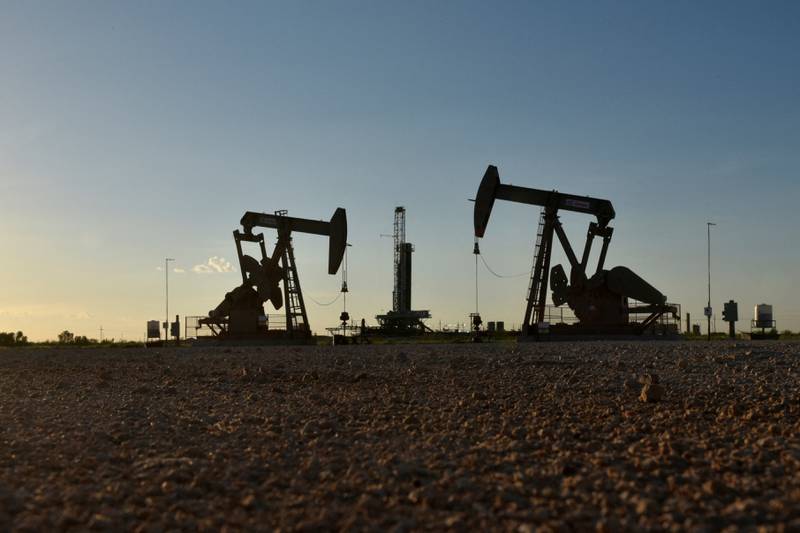The US said it would replenish its Strategic Petroleum Reserve, starting with a purchase of 3 million barrels of crude. Reuters
Oil prices were steady on Tuesday as investors weighed positive economic data from Germany and rising Covid-19 cases in China, the world’s largest crude importer.
Brent, the benchmark for two-thirds of the world’s oil, was trading 0.13 per cent higher at $79.90 a barrel at 8.58am UAE time.
West Texas Intermediate, the gauge that tracks US crude, was up 0.32 per cent at $75.43 a barrel.
“Energy traders might be stuck in wait-and-see mode as there might not be a clear catalyst for the next major move with crude prices,” Edward Moya, senior market analyst at Oanda, said.
“The oil demand outlook will be key for how high crude prices can go and that might struggle for clarity as we see mixed signals with China’s reopening.”
China's business confidence fell to its lowest since 2013, Reuters reported, citing a survey by World Economics.
The index, which is based on a survey of sales managers at more than 2,300 companies, fell to 48.1 in December from 51.8 in November.
Covid infections have surged in China, the world's second-largest economy, after the country relaxed pandemic curbs earlier this month.
However, business sentiment in Germany, the EU’s largest economy, improved in December, despite an energy crisis and high inflation.
The ifo Business Climate Index, which measures the country's business environment and sentiment once a month, rose to 88.6 points this month, up from 86.4 points in November.
“Companies assessed their current situation as better again. This comes on the heels of six consecutive falls in the indicator for the current situation,” the Munich-based research institute said.
“German business is entering the holiday season with a sense of hope.”
Prices were also supported by US plans to restock its emergency crude reserves.
The US said that it would replenish its Strategic Petroleum Reserve, starting with a purchase of 3 million barrels of crude.
The purchase of barrels for delivery in February follows the release of a record 180 million barrels of oil from the country's reserves this year.
“This repurchase is an opportunity to secure a good deal for American taxpayers by repurchasing oil at a lower price than the $96 per barrel average price it was sold for, as well as to strengthen energy security,” the US Department of Energy said on Friday.
Crude prices rallied last week amid the closure of a key US pipeline and expectations of higher demand.
"Oil prices have slipped back into negative territory, giving up their gains from yesterday, which were mainly posted on the back of the optimism that the reopening of the Chinese economy will offset any concerns about recession in the US," Naeem Aslam, chief market analyst at AvaTrade, said.
Also last week, the International Energy Agency increased its global oil demand growth estimate for this year and the next on rising crude consumption in India, China and the Middle East.
The agency now expects oil demand to grow by 1.7 million barrels per day in 2023, up from its previous estimate of 1.6 million bpd.
Oil demand will grow by 2.3 million bpd this year, a 140,000 bpd increase over the agency’s previous forecast.
“Despite the seasonal slowdown in world oil demand and continued macroeconomic headwinds, recent oil consumption data has surprised to the upside,” the IEA said.
Meanwhile, Opec stuck to its oil demand growth forecast for this year and 2023.
The oil producers’ group expects the world economy to grow by 2.8 per cent this year, up from its previous estimate of 2.7 per cent.
